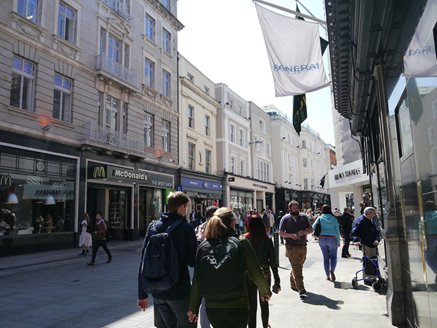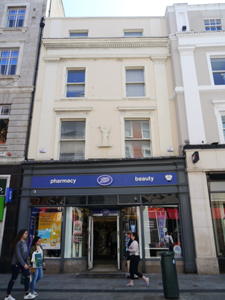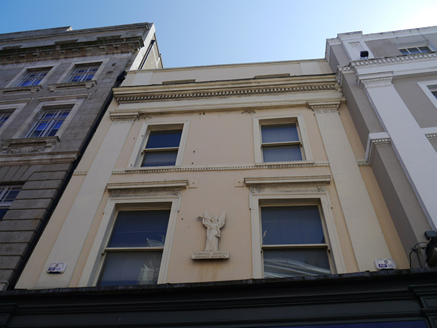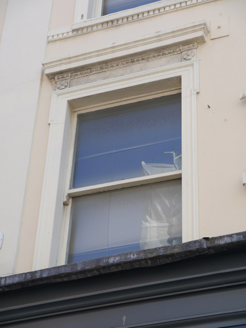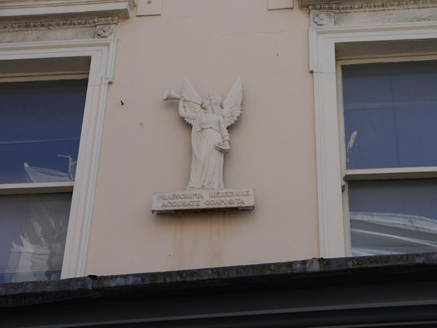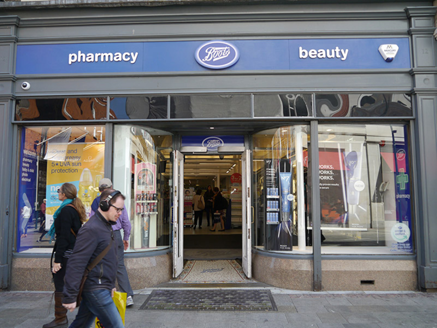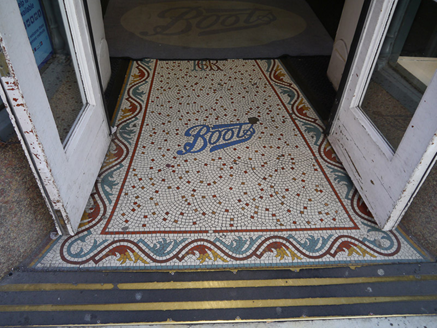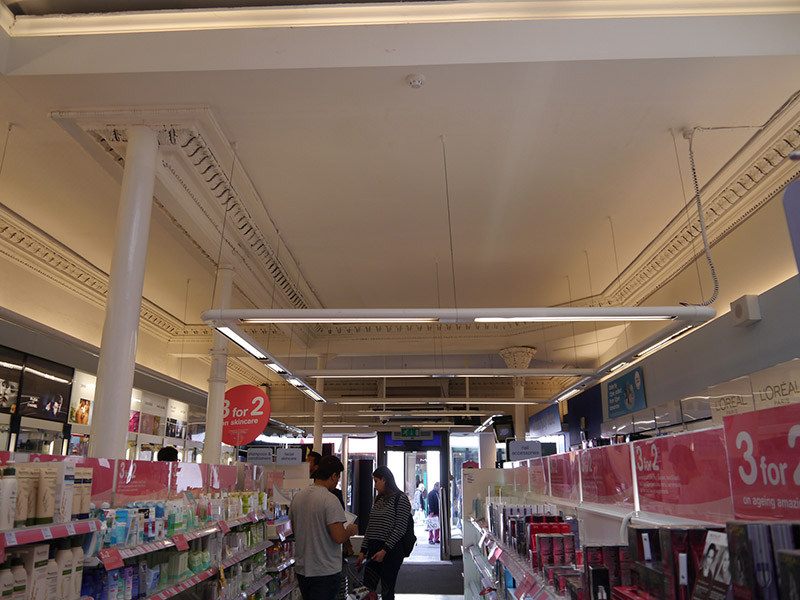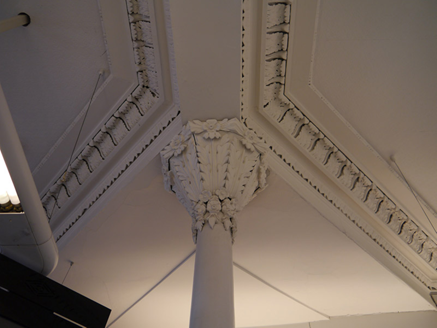Survey Data
Reg No
50100010
Rating
Regional
Categories of Special Interest
Architectural, Artistic
Previous Name
City Drug Hall or William Hayes and Company
Original Use
House
Historical Use
Hotel
In Use As
Shop/retail outlet
Date
1725 - 1870
Coordinates
315984, 233862
Date Recorded
16/05/2016
Date Updated
--/--/--
Description
Attached two-bay three-storey former house over concealed basement, with attic, built c. 1730, modified 1864-5 and rear having addition to ground floor and projection to upper floors at south end. Now in commercial use, having recent timber shopfront to ground floor, and possibly originally having domestic accommodation over. M-profile double-pitched hipped roof, concealed by rendered parapet with painted masonry coping, and having metal downpipe shared with adjoining building. Painted rendered walling of c. 1845 to upper floors, first and second floors framed by classically styled ensemble of pilasters having triple-rosette and egg-and-dart motif to capitals, supporting dentillated entablature. Additional dentil course beneath second floor sill. Plaster relief affixed to centre, depicting winged figure with trumpet above inscription reading "Praescripta Medecinae Accurate Composita". Square-headed window openings, with plain reveals to attic, plain architraves to second floor, and lugged architraves to first floor with embellished entablature. Replacement one-over-one pane timber sliding sash windows with horns. Mosaic flooring to entrance, inset with modern 'Boots' logo, also bearing monogram 'HGR'. Internally, coffered ceiling to ground floor with acanthus moulding, supported by cast-iron columns, some with foliate plaster capitals.
Appraisal
No. 12 Grafton Street is characterized by its restrained classical detailing and a rendered frontage, contrasting with its neighbours to the north, but complementing the variously detailed stucco-fronted facades to the south. The building has an early eighteenth-century origin. Although initially laid out in that century, Grafton Street developed its current retail-based character in the nineteenth century, and the street is defined by an eclectic mix of architectural styles. Casey (2005) suggests that the plaster detailing, repeated in its neighbour No. 13, may have been added when the building became the Royal Hotel, which was here by 1860. In addition, the building retains evidence of its later proprietors, a pharmacy, in the attached plaster relief moulding and the mosaic floor panel. There is a reference (1865) in The Dublin Builder to the builder George Carolin carrying out design of Joseph Maguire for William Hayes and Company who traded as City Drug Hall. The ground floor coffered ceiling, with its classical detailing, enhances the architectural interest of the building. Set back from its neighbours, No. 12 contributes strongly to the eclectic character of the streetscape, which is celebrated as Dublin's premier shopping street.
